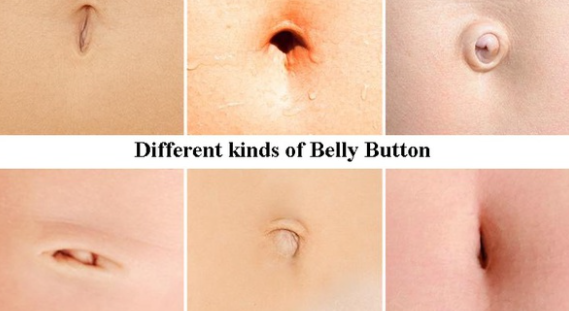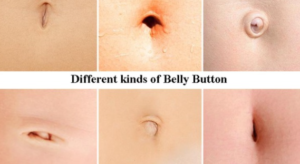
We all think of the hole in our tummy, which we call “belly button” or sometimes “navel”, and decide that it is a normal occurrence on every human or mammal as far as the umbilical cord was cut when we were born.
So far, that is true and we do not find the belly button fascinating enough to wonder about it. However, there are certain facts about the belly button that is interesting to learn about.
Here are some of them:
- The belly button is our first scar.
Technically, the cutting of the umbilical cord at a child’s birth is the first wound he or she has, which eventually heals up forming the belly button. Therefore, that small pit in your tummy is your first scar. I bet we have never thought of it this way.
- The belly button is home to a startling number of diversified bacteria.
Out of curiosity, a team of researchers decided to explore the microbiome of the belly button and discovered over 2000 species of bacteria resident in the belly buttons of 60 volunteers.
That is a whopping amount of bacteria to be found in such a small space, but as impossible as it seems, our belly buttons hold that much bacteria.
- The belly button is linked to the liver.
We may likely know that the purpose of the umbilical cord during pregnancy is to take the nutrient and oxygen-rich blood of the mother in and out of the fetus. There are two lines of the umbilical; the vein which delivers blood from the mother to the baby and the arteries that carry waste products from the baby back to the mother, who disposes of them.
At birth, the umbilical cord is cut and the internal veins and arteries harden into types of ligaments that are attached to the inner part of the belly button. One of the ligaments is connected to and bisects the liver.
- Not everyone has a belly button.
A non-photo shopped picture of the model, Karolina Kurkova shows that her belly button is non-existent. Now you wonder how because it seems every child should be linked to the mother by an umbilical cord.
But some children are born with a rare defect called “umbilical hernia” or a serious form of “gastroschisis”, where the baby’s intestines poke out through the intestinal/abdominal wall and when a surgery is performed, it leaves the baby with no belly button.
- The cutting of the umbilical cord does not determine the belly button type.
There is a myth that the way the obstetrician cuts and ties the umbilical cord leads to a baby having either an outie or an innie, but this is wrong. In reality, having an outie or innie depends on how the skin of the baby grows and folds around the umbilical cord. An outie can also mean the presence of a mild umbilical hernia or can be due to an infection in the site after the cutting.
- Belly buttons begin as outies and then go in to become innies.
When the belly button is cut, it begins to heal and as the skin folds, it transforms from an outie into an innie.
- Only 10% of people have outies.
From research, only a few numbers of the world’s population have an outie. The percentage of people in the world with outies is estimated at 10%.
- Sometimes, an expanding belly from pregnancy can turn an innie into an outie.
During pregnancy, the belly protrudes and expands and in some cases, the navel pushes out and becomes an outie due to the pressure of the baby on the belly. The outie can return to an innie after birth.
- Boob jobs are mostly performed through the belly button.
Incisions made to perform boob jobs are often made through the belly button. This is done to keep scars away from obvious areas.
- Not all mammals have belly buttons.
While biology states that all mammals including sea mammals have belly buttons, there are some which do not. Some examples are kangaroos and platypuses.
- Thousand of people go for belly button surgery every year.
To achieve perfect belly buttons as specified, people go for belly button surgery to reshape their belly buttons or change their belly buttons from an outie to an inner. Also, people who undergo tummy tuck procedures have their navels touched as well.
Belly button lint comes from clothes.
Ever heard of belly button lint? Like ear wax or toe stumps, certain people have dirt trapped in their navels called lint, which is not produced from the navel. So how does this form?
Research states that lint mostly occurs in people who are overweight and have hairy tummies especially hairs around their belly button. The hair traps bits of cotton fibers from clothes and the movement takes the fibers down into the hole and if not regularly cleaned, it accumulates into lines.
- Belly button piercing takes very long to heal.
Belly button piercing is one of the piercings with the slowest rate of healing. It takes 6 to 12 months to heal out and it is very painful and is easily infected.
- There is a medication process called Hesychasm (meditating by navel-gazing).
This sounds funny but this was used by Greek Christian monks of Mount Athos to have a deeper insight into divine glory. It is said that looking at and contemplating on one’s belly button calms the soul.
- The belly button is an erogenous spot.
The belly button has been linked as a spot of arousal during fireplace and sexual encounters. Also, it is said that an exposed belly button is considered very attractive to men. Now, that’s one useful fact to go home with.


